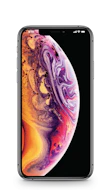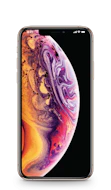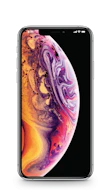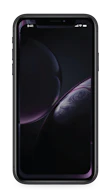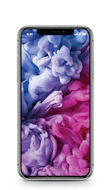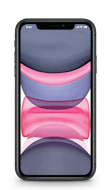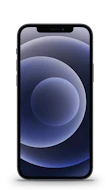Apple iPhone XS
Features
- The iPhone XS camera has a 12-megapixel wide-angle and telephoto camera. 2x optical zoom and 10x digital zoom. 4K video recording, A 7-megapixel front camera with 1080p HD video recording.
- The A12 Bionic chip has six cores, four for efficiency and two for performance. The A12 is 2x faster than the A11 and has a 50% lower battery drainage.
- The iPhone XS features a 5.8-inch Super Retina HD OLED Display with 2436x1125 pixel resolution with Gorilla Glass 6 and 3D touch
- The iPhone XS has a height of 14.3 cm, a length of 7.07 cm and a width of 0.70 cm, and weighs 177 grams.
- iPhone users with disabilities can make full use of their device with features like Voice Over. Zoom, Dictation, Real-Time Text, Assistive Touch, Speak Screen, Type to Siri, Closed Captions and Switch Control.
FAQs
Got any questions about the iPhone XS? We’ve got the answers for you
The iPhone XS costs between R6199.00 - R9870.00 in South Africa.
A second-hand iPhone XS in excellent condition and a 12-month warranty ranges from R7,372 - R10,842 on Phonetradr.
From top to bottom, it is 14.3 cm x 7.07 cm x 0.70 cm.
You can get it in Silver, Gold and Space Grey.
The iPhone XS is protected with Corning Gorilla Glass 6, the strongest display protector in smartphones today.
The iPhone XS is water resistant. It has a rating of “IP68” which means they are fully protected from dust and can handle being under freshwater for up to 30 minutes at a depth of 2 metres. If your phone gets dropped in a puddle, a shallow pool, or wet from the rain, it will be just fine. Steam from your bathroom shower, however, is not included in this rating, so rather keep it away from steam.
The iPhone XS has the A12 Bionic processor. The chip has six cores - four for high efficiency and two for high performance. This promises speed and efficiency that’s 2x faster than the A11 chip and up to 50% lower in battery drainage. The chip’s graphics processing is also an improvement from the A11 with four cores and 50% faster graphics processing.
You can get the iPhone XS with 64GB, 256GB or 512GB of space. For a better picture on how much 256GB is, it equates to an average amount of 73,224 photos. For the 64GB model, that’s approximately 15,000 photos!
The phone comes with 3G of RAM.
It has a 12-megapixel dual camera at the back and a 7-megapixel selfie camera at the front. The dual camera means you get more range in your photos!
Yes, portrait mode is available on the iPhone XS. Portrait mode focuses on the subject of the photo and blurs the background, providing more depth. For photography enthusiasts, portrait mode makes use of the phone’s 56mm-equivalent "telephoto" lens.
Open your Camera app, then select ‘Portrait” on the right side. Your lighting options will appear on your screen such as Natural Light, Studio, Contour and Stage Light. After selecting your lighting, hold up your phone and focus on the person you’d like to photograph.
When taking a photo, there is a 2x zoom option on the screen. Taping this will give you 2X optical zoom. If you hold the 2x button, it will expand to give you further digital zoom options. In other words, anytime you use zoom up to 2x, it will automatically be optical zoom.
You can easily record a demonstration of something from your phone using the built-in screen recorder.
- Make sure your phone is updated to iOS 12
- Go to your Settings, then select Control Centre. Tap into ‘Customise Controls’ then add “Screen Recording” to the list
- Exit your settings and then head to your homescreen. Swipe up the Control Centre and select the little white circle in the square icon. This is the Screen Recording icon.
- The recorder will count down from 3 and then whatever actions you take on your iPhone will be recorded.
- Once you’re done, tap the red recording timer at the top of your screen to stop the recording. You can find your recording in your camera roll and edit it just like a standard video such as trimming the start and end of it. Or, you can edit it in iMovie which comes free with your iPhone.
We would recommend that you invest in a case or cover for your iPhone XS. A good cover can protect your phone from cracked screens, from drops, dents, dirt, scratches and help keep it looking like new for when you’d like to sell it.
The iPhone XS lasts up to 30 minutes longer than the iPhone X. Wireless talk time goes up to 20 hours, internet use up to 12 hours, and video playback up to 14 hours.
It weighs 177 grams, which is slightly less than a can of tinned tomato and onion mix.
Yes, the iPhone XS supports wireless charging via any Qi-certified wireless charger, and also supports fast wireless charging, which can charge your phone from 0% to 50% in around 30 minutes. To use fast wireless charging, you'll need a compatible fast wireless charger like the Apple MagSafe Charger, and a power adapter that supports at least 20W or higher.
The best wireless charger for the iPhone XS is the Belkin Boost Up Wireless Charging Pad: This charger provides up to 7.5W of power and is compatible with the iPhone XS. It has a non-slip surface to keep your phone in place and comes with a wall adapter, we can also recommend the Anker PowerWave 7.5 Stand: This charger also provides up to 7.5W of power, has a stand design that allows you to use your phone while it charges. It has temperature control and surge protection to keep your phone safe.
Yes, the iPhone XS is compatible with the magnetic card holder cases.
There are many good card holder cases available for the iPhone XS. Here are some of the best ones: Smartish iPhone XS Wallet Case: This case has a durable construction and can hold up to three cards or cash. It has a slim design and comes in a variety of colors. Silk iPhone XS Wallet Case: This case is made of textured high-grip material and has a reinforced grip for added protection. It can hold up to three cards or cash and has a slim design. Vena vCommute iPhone XS Wallet Case: This case has a military-grade drop protection and can hold up to three cards or cash. It has a slim design and comes in a variety of colors. Spigen Slim Armor CS iPhone XS Case: This case has a dual-layer design with a shock-absorbing TPU interior and a hard polycarbonate exterior. It can hold up to two cards and has a slim design.










































